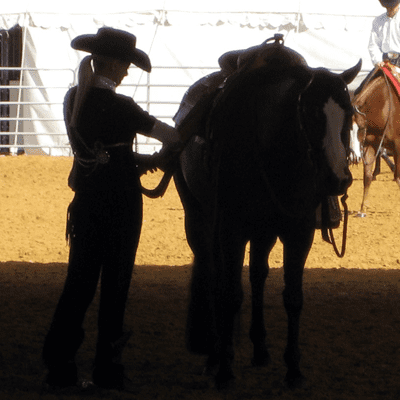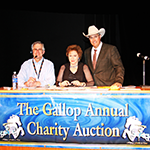Owner, exhibitor and breeder feedback is driving changes to the American Quarter Horse Association Incentive Fund. To make the program more beneficial to all competitors, effective January 1, 2016, competition licenses will no longer be required, and the point cap will change to one plus the average number of points earned during the year.
The AQHA Incentive Fund has been the standard that many incentive-type programs have been modeled after and continues to be one of the best in the industry.
“The average payouts have been more than $2.8 million each year and the total dollar amounts last year were greater than the first 10 years of the fund. It’s a great time to make your horses part of this program,” said Trent Taylor, AQHA acting chief operating officer and treasurer.
Since the inception of the Incentive Fund in 1984, only slight modifications had been made to the program over the course of 30 years. As the point values decreased, which coincided with the downturn in the industry, AQHA began looking for ways to adjust the fund. In 2012, the program underwent major changes following a review by the Incentive Fund task force. The task force comprised mare owners, stallion owners, exhibitors, professional horsemen and show managers.
Following the changes in 2012, owners were required to purchase annual competition licenses to receive point payouts. Additionally, a point cap was set at 200 points and payout percentages were changed so that 70 percent was paid to owners, 15 percent to stallion nominators and 15 percent to foal enrollers.
During the past three years, the Incentive Fund has been the center of much discussion.
“Listening to feedback from owners, breeders and exhibitors, it’s evident that competition licenses were not the right fit for the Incentive Fund,” Taylor said.
“Changing the point cap from 200 points to one plus the average will increase the money received by the majority of participants,” he added.
Certain factors play into the success of the Incentive Fund. First, there’s the amount of money paid into the fund. With these changes, effective January 1, 2016, breeders who nominate their stallions and owners who enroll their foals will increase and continue to increase the funds for the program.
The other factor affecting the Incentive Fund is the total number of points earned each year by enrolled horses.
“The success of the horse industry – new classes, larger class sizes, more divisions and levels – all add up to more points being earned every year,” said Pete Kyle, AQHA chief show officer, noting that this has proved to be a double-edged sword for the program. “But what a great problem to have – more people enjoying their American Quarter Horses in more events.
“Back in the 1980s, the Incentive Fund was created for all people showing. The Incentive Fund been helpful with exhibitors’ expenses to get them rolling into the next show season,” Kyle added.
Owners and exhibitors use their Incentive Fund checks to pay for everything from equine insurance and horse-health products like Adequan and Ulcergard to even college tuition.
“When a show ends, we think the winning stops. But with the Incentive Fund, it doesn’t,” said AQHA Executive Vice President Craig Huffhines. “The value of owning an Incentive Fund horse is immense.”
When the Incentive Fund was instituted nearly 30 years ago, it was considered to be the most innovative show rewards program of its time to hit the American Quarter Horse industry. Since then, the Incentive Fund has paid more than $75 million to program supporters. The AQHA Incentive Fund also pays more than twice the amount per point than any other equine breed organization’s incentive program.
“If stallion owners and nominators continue to support the program, and demand from exhibitors increases to own enrolled horses, it’s easy to see how the fund and, subsequently, the rewards paid to all supporters could yield larger dividends than are seen today,” Huffhines added.
Listening to feedback from owners, breeders and exhibitors is crucial to the success of the Incentive Fund.
“Over the past couple years, we have heard from interested parties and made modifications, and we invite our members’ feedback,” Taylor said. “In the end, we hope you continue or begin to be part of horse showing’s richest, most-comprehensive incentive program.”
Incentive Fund stallion nominations are due November 30. To nominate a stallion, enroll a foal or learn more about the program, visit www.aqha.com/incentivefund.
Important Note for Owners in 2015
Owners must file competition licenses for horses that have been showing in 2015. The changes noted above go into effect January 1, 2016, and will affect checks received in 2017.







